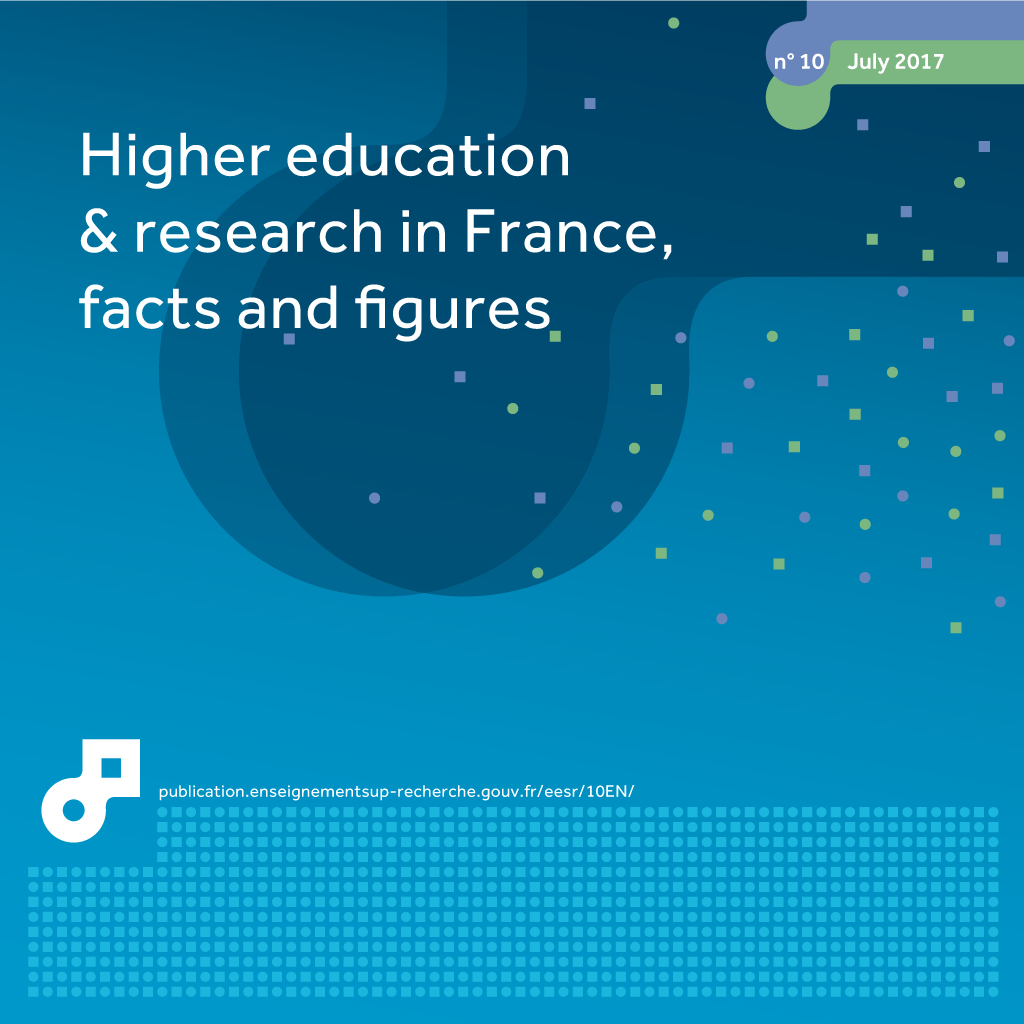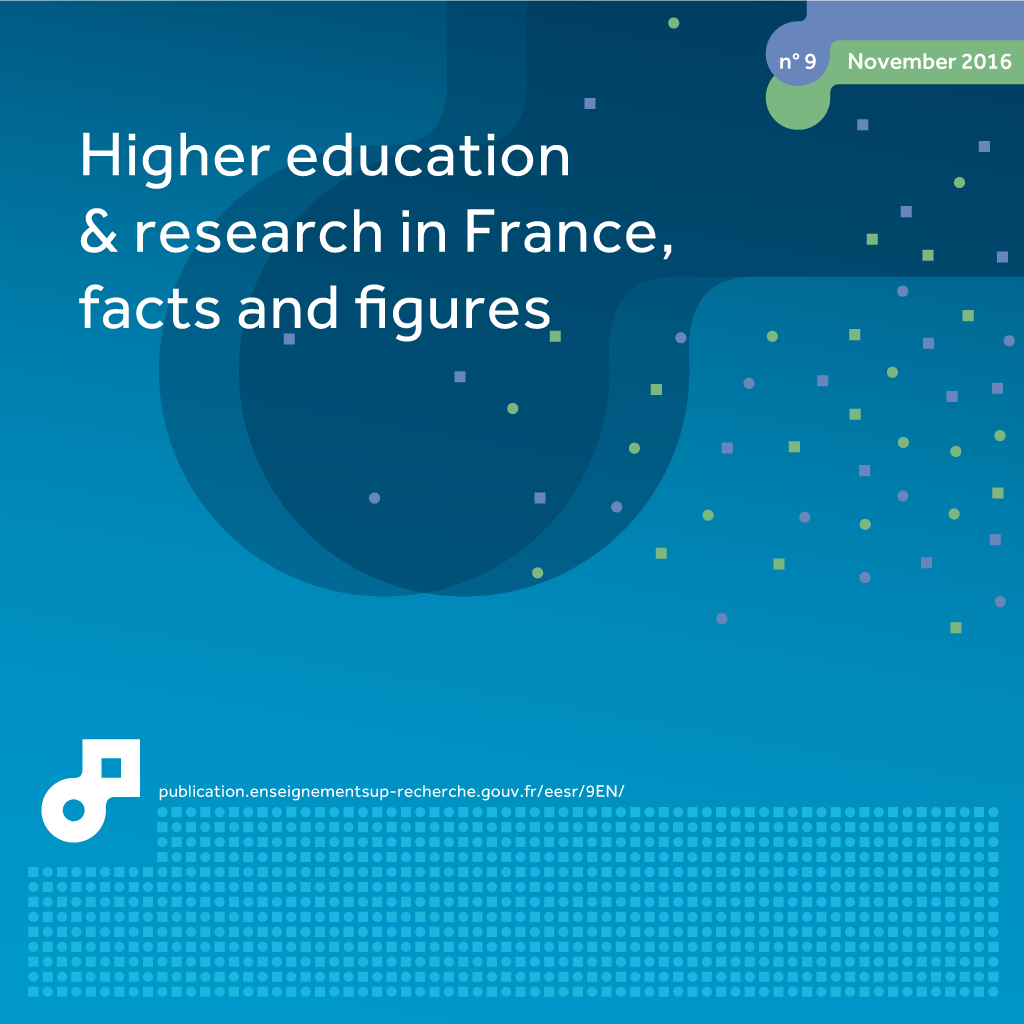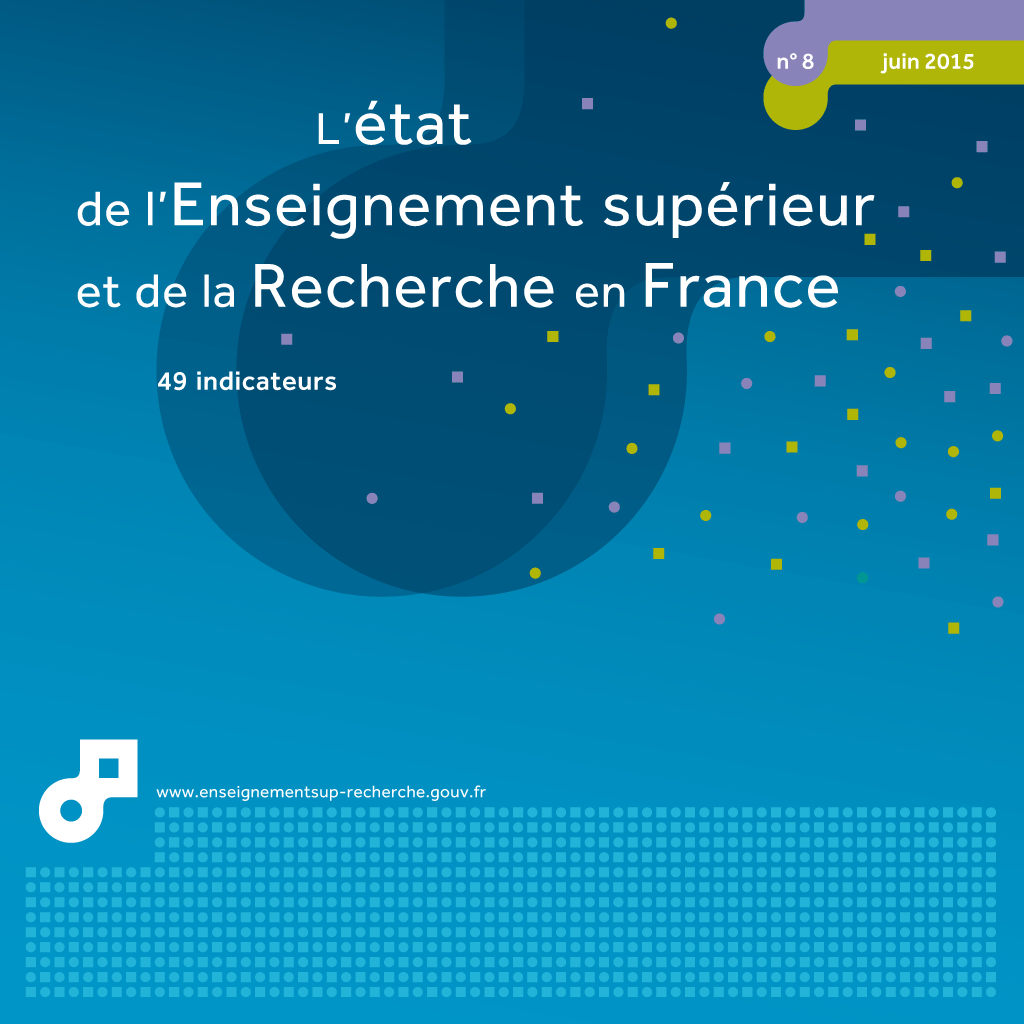19 level of education among the general population and among young people
This page has been updated. Read 20. level of education among the general population and among young people in Higher education & research in France, facts and figures 10th edition - June 2017
In France, young people are more likely to hold a higher education qualification than older people and than young people living in other OECD countries. In the early 2010s, 43% of young people leaving initial education held a higher education qualification.
Several indicators can be used to measure the proportion of young people with a higher education qualification, compare this with other countries, analyse recent changes and identify the effects of the latest reforms.
In 2013, 44% of young people aged between 25 and 29 held a higher education qualification (chart 19.01). 28% held a qualification from a long-term course, such as a Bachelor’s degree or higher qualification, while 16% held a vocational qualification from a shorter course, such as a higher technical certificate (Brevet de technicien supérieur – BTS), university technology diploma (Diplôme universitaire de technologie – DUT) or paramedical or social care qualification. This proportion is very similar to that for people aged 30-34 and 35-39, but is significantly higher than that for older people. This reflects the more general increase in the level of education of generations observed in higher education through to the mid-1990s.
This rise became apparent relatively late in comparison with other OECD countries. The proportion of people aged between 25 and 64 in the French population who have higher education qualifications therefore remains lower than the average for OECD countries (2012 data). Secondary and higher education was less developed in France than in the United States or Japan when those now aged 60 were educated. Conversely, the generations that fall within the 25-34 age bracket are now more likely to hold a higher education qualification (43%) than the OECD average (39%) (chart 19.03). For these generations, France is one of the OECD countries with the most people holding vocational higher education qualifications from short courses (5th place), but has relatively fewer graduates from longer-term higher education courses (22nd place).
In an effort to build on the objectives of the Lisbon strategy and promote the creation of a ‘knowledge society’, the European Union (EU) has stated that at least 40% of young adults aged between 30 and 34 living in EU countries should hold a higher education qualification by 2020 (the figure was 37% in 2012). France has already achieved this objective (44%).
A second indicator, which focuses on initial education, can be used to calculate at national level the qualifications obtained by young people who have recently left initial education, by measuring the proportion of young people with higher education qualifications among those leaving education. 43% of young people leaving initial education in 2011-2013 held a higher education qualification: 28% had qualifications from longer-term courses and 15% had vocational higher education qualifications from short courses (table 19.02). This breakdown is relatively similar to that for young people who left the education system in 2008-2010. However, with the development of the new ‘Bachelor’s Degree, Master’s and PhD’ (Licence Master Doctorat - LMD) system, those who have most recently left education were more likely to continue their studies, with 18% of them obtaining a Master’s-level qualification (including those awarded by engineering and business schools), as compared with only 14% three years previously.
Among those leaving initial education, some students with baccalauréats enrolled on higher education courses without subsequently obtaining a qualification (table 19.02). This was the case for approximately 75,000 young people, accounting for 19% of those leaving higher education. This proportion is lower than the OECD average (32% in 2011). In addition to this, 42% of young people leaving the education system held at most an upper secondary level (second cycle) qualification, while 15% had a lower secondary level qualification (Brevet des collèges) or no qualifications.
Finally, a third national indicator aims to factor in more recent changes relating to access to higher education courses. This indicator is obtained for a given year by aggregating, for each age, the proportion of young people of that age who obtain an initial higher education qualification. It is this indicator that is monitored under the French Organic Law on Finance Laws (Loi organique relative aux Lois de finances – LOLF), with a target set at 50%. It was 45.9% in 2012. This indicator has increased slightly and is higher than the previous indicators, reflecting the recent rise in the numbers of students accessing higher education courses.
How to cite this paper :
close
Key figures
Metropolitan France
Metropolitan France
Metropolitan France
19.01 Proportion of people with higher education qualifications by age in 2013 (%)
In 2013, 44% of young people aged between 25 and 29 stated that they held a higher education qualification, as compared with 16% of those aged between 60 and 64.
You can embed this chart to your website or your blog by copying the HTML code and pasting it into the source code of your website / blog:
close
19.02 Breakdown of people leaving initial education by their highest qualification (in thousands and as a %)
1 PhDs are research-based and culminate in a thesis.
On average, 43% of those leaving initial education in 2010, 2011 and 2012 graduated with higher education qualifications, as compared with an average of 41% in 2007, 2008 and 2009.
You can embed this table to your website or your blog by copying the HTML code and pasting it into the source code of your website / blog:
close
19.03 Proportion of the population with higher education qualifications in 2012 (%)
You can embed this chart to your website or your blog by copying the HTML code and pasting it into the source code of your website / blog:
close
Translation
 Etat de l'enseignement supérieur et de la rechercheL'état de l'Enseignement supérieur et de la Recherche en France n°8 - juin 2015
Etat de l'enseignement supérieur et de la rechercheL'état de l'Enseignement supérieur et de la Recherche en France n°8 - juin 201519 - le niveau d'études de la population et des jeunes - Béatrice Le Rhun







